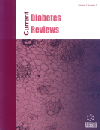
Full text loading...
We use cookies to track usage and preferences.I Understand
Diabetic nephropathy (DN), the primary risk factor for end-stage kidney disease (ESKD) that requires dialysis or renal transplantation, affects up to 50% of individuals with diabetes.
In this article, potential mechanisms, biomarkers, and possible therapeutic targets will be discussed, as well as their interventional therapies.
A literature review was done from databases like Google Scholar, PUBMED-MEDLINE, and Scopus using standard keywords “Diabetic Nephropathy,” “Biomarkers,” “Pathophysiology,” “Cellular Mechanism,” “Cell Therapy,” “Treatment Therapies” from 2010-2023. It has been studied that metabolic as well as hemodynamic pathways resulting from hyperglycemia act as mediators for renal disease.
We identified 270 articles, of which 210 were reviewed in full-text and 90 met the inclusion criteria. Every therapy regimen for the prevention and treatment of DN must include the blocking of ANG-II action. By reducing inflammatory and fibrotic markers brought on by hyperglycemia, an innovative approach to halting the progression of diabetic mellitus (DN) involves combining sodium-glucose cotransporter-2 inhibitors with renin-angiotensin-aldosterone system blockers. When compared to taking either medicine alone, this method works better. AGEs, protein kinase C (PKC), and the renin-angiotensin aldosterone system (RAAS) are among the components that are inhibited in DN management strategies.
Thus, it can be concluded that the multifactorial condition of DN needs to be treated at an early stage. Novel therapies with a combination of cell therapies and diet management are proven to be effective in the management of DN.

Article metrics loading...

Full text loading...
References


Data & Media loading...
Supplements

